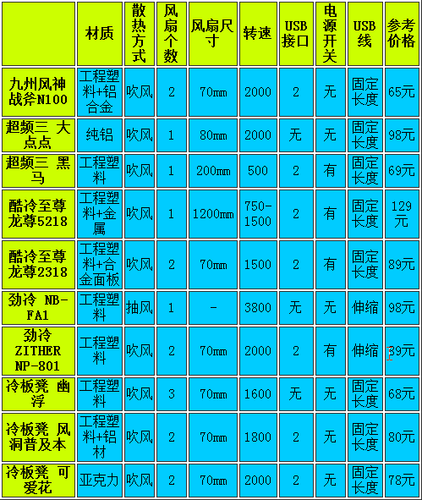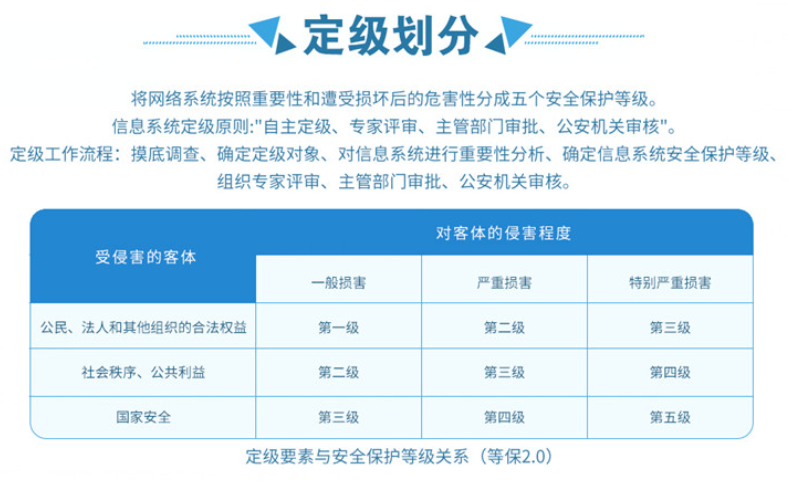陈宏
2021-03-31 22:28
A University of Toronto computer scientist known for combining artificial intelligence with big data genomics is launching a company that could create a roadmap for DNA-based therapy.
The company, called Deep Genomics, is set to launch on Wednesday.
It will be wading in to the growing market for diagnostics and personalized medicine based on whole genome squencing.[ ]VIDEO
Video: Researchers develop glasses that are better than x-ray vision for cancer treatment[An executive at Google is predicting that in the next 15 y优艾设计网_设计百科ears, humans’ brains will be able to be directly connected to the Cloud, and we will be connected to thousands of computers that will augment our intelligence through nano-bots. In layman’s terms, he thinks our thinking will be part “biological” and part “non-biological”. Kristina Partsinevelos reports.]VIDEO
Video: Humans will be hybrids by 2030: Google executive
While it has become common for researchers to identify genetic mutations that appear to correlate with various diseases – thousands of mutations have been linked to cancer, for example – the technology behind Deep Genomics involves the use of computer algorithms that can tease out cause and effect relationships.
It’s a method that was developed by Brendan Frey, a professor in the university’s department of computer and electrical engineering.
“My approach was let’s train a neural network to figure out why a mutation leads to a disease,” said Prof. Frey, who is the company’s president and CEO. “That’s what makes our technology unique.”
The method draws on a rapidly growing discipline in computer science known as deep learning, which has lately been making inroads in a range of tough computational problems – including visual identification and speech recognition – where context plays an important role in arriving at the right answer. The field has a long history as a branch of artificial intelligence in which a computer program can adjust itself to become better and better at a complex task. In deep learning, the software is one step further removed from human guidance and can learn to make associations beyond what a human expert might discern.
In recent years, Prof. Frey has taken the same principles to create a set of computer algorithms that can look at the pattern of mutations in an individual’s DNA and make inferences about how those mutations collectively affect the operation of different types of cells in the body.
It’s the predictive power of the algorithms that are key to how Deep Genomics will serve its clients, including other companies that offer diagnostic services to hospitals and health care providers. By linking the DNA sequence to cellular function, the objective is to help determine not only what may be the source of a health problem but what treatment may be more likely to succeed.
Prof. Frey said that when he and his colleagues first published work on the approach in 2010, he expected it would quickly be taken up by entrepreneurs in the biomedical sector and was surprised when that didn’t happen. He concluded that there were too few research groups with the combined expertise in genomics and artificial intelligence to turn the approach into something that would be of use to clinicians and patients.
He decided to launch the company last fall, he said. Angel investors have provided the initial capital to launch the eight-person Toronto-based company, which Prof. Frey hopes will double by the end of the year and quickly find a niche in genetic diagnostics.
Yann LeCun, the New York-based director of artificial intelligence at Facebook and an adviser to the new company, said that while the importance of deep learning is now well established in many areas of data analysis, its impact on medicine is just beginning to be felt.
“The potential applications are really huge,” he said.
高震 优艾设计网_PS百科 2021-03-31 22:45
一家用机器学习做Genomics的公司
邱顺亚 2021-03-31 22:50
把目光投向一家美国初创公司,或许这能给我们一些启示。
Deep Genomics,源自多伦多大学的一家创业公司。对人工智能稍有了解的人就能看出这个名字的含义:Deep Genomics = Deep Learning + Genomics。Deep Genomics致力于利用机器学习算法来预测基因组上的突变会如何改变细胞,进而知道会给人体带来什么改变。Deep Genomics的第一个产品是SPIDEX,预测基因组突变对RNA剪切的影响。关于SPIDEX的方法学细节,可以查看2015年1月的Scie优艾设计网_设计百科nce。机器学习专家、基因组学专家和精准医疗专家组成的团队,让这个公司很快就登上了Nature Biotechnology、科学美国人、WIRED、CBC新闻等学术、科普、科技和传统媒体。
Deep Learning,深度学习,一种模拟人类大脑工作方式的机器学习算法,近年来被广泛用于语音识别、图像识别等海量非结构化数据学习。Google、Facebook、微软等IT巨头在深度学习领域都投入巨资,国内的百度挖来深度学习领域的华人大神余凯成立百度深度学习研究院,随后再引入深度学习巨匠Andrea Ng担任研究院院长。余凯老师今年从百度离职,据悉将在人工智能芯片方面开始创业----可以相信,余凯老师看到了以深度学习为代表的机器学习技术更广阔的应用场景和商业化前景。
通过模拟人脑的工作方式设计和开发人工智能模型和算法一直以来就是人工智能领域的一个重要发展方向。脑科学的发展,让我们知道人类的大脑是通过很多层结构对数据进行抽象和学习的。但传统的神经网络算法,受制于数据量和计算能力,往往只有很少的几层。即便如此,神经网络算法也广泛的用于互联网、工业控制、以及生命科学等诸多领域。随着以分布式存储和计算、GPU和MIC等众核计算技术在最近十来年的神速进步,以及互联网在采集数据方面的强大能力,人们开始研究如何实现有更复杂的层次结构,可以处理更复杂的数据,尤其是非结构化数据的机器学习算法。深度学习中所谓的深度就来自这复杂的层次结构,让人觉得是一个深不见底的黑洞。
如前所述,深度学习在语音识别、图像识别等领域取得了巨大的成功,让这些之前只存在于科幻电影中的技术迅速地步入大众生活。但在生命科学领域,这个被宣称正在快速从实验科学变为理论科学、数据科学的领域,深度学习并没有带来革命性的变化,零星的科研论文出现在生物信息学和基因组学的学术期刊上,波澜不惊。相对于图像数据和语音数据,生命科学数据获取的高成本使得数据积累量还远远满足不了一般意义上的深度学习模型的需求,而商业模型的不成熟也阻碍了商业机构在这方面的投入。
Deep Genomics 在技术方面的工作已经发表在了今年一月份的Science和去年6月份的Bioinformatics上,最新的工作即将在Nature Biotechnology上发表。例如,在Bioinformatics上发表的文章中,主要的数据是11019份小鼠的可变外显子(alternative exons)的RNA-Seq数据,然后据此构建深度神经网络来预测组织间的剪切模式。显然,使用小鼠和局限于外显子,大幅度的降低了构建大规模训练数据集的成本。一万多份样本,在图形、机器感知等领域还是很小的样本,但在生命科学领域,尤其是高通量组学领域,已经算得上是不小的样本量了。但这并不是高不可攀,安徽医科大学发表在Nature Genetics上的银屑病项目也对约两万人的样本进行了目标区域捕获测序。对这样规模的数据构建深度学习模型,在模型设计和计算效率上都不存在太大的困难。
------以上摘自biodata微信你懂的
A University of Toronto computer scientist known for combining artificial intelligence with big data genomics is launching a company that could create a roadmap for DNA-based therapy.
The company, called Deep Genomics, is set to launch on Wednesday.
It will be wading in to the growing market for diagnostics and personalized medicine based on whole genome squencing.[ ]VIDEO
Video: Researchers develop glasses that are better than x-ray vision for cancer treatment[An executive at Google is predicting that in the next 15 y优艾设计网_设计百科ears, humans’ brains will be able to be directly connected to the Cloud, and we will be connected to thousands of computers that will augment our intelligence through nano-bots. In layman’s terms, he thinks our thinking will be part “biological” and part “non-biological”. Kristina Partsinevelos reports.]VIDEO
Video: Humans will be hybrids by 2030: Google executive
While it has become common for researchers to identify genetic mutations that appear to correlate with various diseases – thousands of mutations have been linked to cancer, for example – the technology behind Deep Genomics involves the use of computer algorithms that can tease out cause and effect relationships.
It’s a method that was developed by Brendan Frey, a professor in the university’s department of computer and electrical engineering.
“My approach was let’s train a neural network to figure out why a mutation leads to a disease,” said Prof. Frey, who is the company’s president and CEO. “That’s what makes our technology unique.”
The method draws on a rapidly growing discipline in computer science known as deep learning, which has lately been making inroads in a range of tough computational problems – including visual identification and speech recognition – where context plays an important role in arriving at the right answer. The field has a long history as a branch of artificial intelligence in which a computer program can adjust itself to become better and better at a complex task. In deep learning, the software is one step further removed from human guidance and can learn to make associations beyond what a human expert might discern.
In recent years, Prof. Frey has taken the same principles to create a set of computer algorithms that can look at the pattern of mutations in an individual’s DNA and make inferences about how those mutations collectively affect the operation of different types of cells in the body.
It’s the predictive power of the algorithms that are key to how Deep Genomics will serve its clients, including other companies that offer diagnostic services to hospitals and health care providers. By linking the DNA sequence to cellular function, the objective is to help determine not only what may be the source of a health problem but what treatment may be more likely to succeed.
Prof. Frey said that when he and his colleagues first published work on the approach in 2010, he expected it would quickly be taken up by entrepreneurs in the biomedical sector and was surprised when that didn’t happen. He concluded that there were too few research groups with the combined expertise in genomics and artificial intelligence to turn the approach into something that would be of use to clinicians and patients.
He decided to launch the company last fall, he said. Angel investors have provided the initial capital to launch the eight-person Toronto-based company, which Prof. Frey hopes will double by the end of the year and quickly find a niche in genetic diagnostics.
Yann LeCun, the New York-based director of artificial intelligence at Facebook and an adviser to the new company, said that while the importance of deep learning is now well established in many areas of data analysis, its impact on medicine is just beginning to be felt.
“The potential applications are really huge,” he said.
高震 优艾设计网_PS百科 2021-03-31 22:45
一家用机器学习做Genomics的公司
邱顺亚 2021-03-31 22:50
把目光投向一家美国初创公司,或许这能给我们一些启示。
Deep Genomics,源自多伦多大学的一家创业公司。对人工智能稍有了解的人就能看出这个名字的含义:Deep Genomics = Deep Learning + Genomics。Deep Genomics致力于利用机器学习算法来预测基因组上的突变会如何改变细胞,进而知道会给人体带来什么改变。Deep Genomics的第一个产品是SPIDEX,预测基因组突变对RNA剪切的影响。关于SPIDEX的方法学细节,可以查看2015年1月的Scie优艾设计网_设计百科nce。机器学习专家、基因组学专家和精准医疗专家组成的团队,让这个公司很快就登上了Nature Biotechnology、科学美国人、WIRED、CBC新闻等学术、科普、科技和传统媒体。
Deep Learning,深度学习,一种模拟人类大脑工作方式的机器学习算法,近年来被广泛用于语音识别、图像识别等海量非结构化数据学习。Google、Facebook、微软等IT巨头在深度学习领域都投入巨资,国内的百度挖来深度学习领域的华人大神余凯成立百度深度学习研究院,随后再引入深度学习巨匠Andrea Ng担任研究院院长。余凯老师今年从百度离职,据悉将在人工智能芯片方面开始创业----可以相信,余凯老师看到了以深度学习为代表的机器学习技术更广阔的应用场景和商业化前景。
通过模拟人脑的工作方式设计和开发人工智能模型和算法一直以来就是人工智能领域的一个重要发展方向。脑科学的发展,让我们知道人类的大脑是通过很多层结构对数据进行抽象和学习的。但传统的神经网络算法,受制于数据量和计算能力,往往只有很少的几层。即便如此,神经网络算法也广泛的用于互联网、工业控制、以及生命科学等诸多领域。随着以分布式存储和计算、GPU和MIC等众核计算技术在最近十来年的神速进步,以及互联网在采集数据方面的强大能力,人们开始研究如何实现有更复杂的层次结构,可以处理更复杂的数据,尤其是非结构化数据的机器学习算法。深度学习中所谓的深度就来自这复杂的层次结构,让人觉得是一个深不见底的黑洞。
如前所述,深度学习在语音识别、图像识别等领域取得了巨大的成功,让这些之前只存在于科幻电影中的技术迅速地步入大众生活。但在生命科学领域,这个被宣称正在快速从实验科学变为理论科学、数据科学的领域,深度学习并没有带来革命性的变化,零星的科研论文出现在生物信息学和基因组学的学术期刊上,波澜不惊。相对于图像数据和语音数据,生命科学数据获取的高成本使得数据积累量还远远满足不了一般意义上的深度学习模型的需求,而商业模型的不成熟也阻碍了商业机构在这方面的投入。
Deep Genomics 在技术方面的工作已经发表在了今年一月份的Science和去年6月份的Bioinformatics上,最新的工作即将在Nature Biotechnology上发表。例如,在Bioinformatics上发表的文章中,主要的数据是11019份小鼠的可变外显子(alternative exons)的RNA-Seq数据,然后据此构建深度神经网络来预测组织间的剪切模式。显然,使用小鼠和局限于外显子,大幅度的降低了构建大规模训练数据集的成本。一万多份样本,在图形、机器感知等领域还是很小的样本,但在生命科学领域,尤其是高通量组学领域,已经算得上是不小的样本量了。但这并不是高不可攀,安徽医科大学发表在Nature Genetics上的银屑病项目也对约两万人的样本进行了目标区域捕获测序。对这样规模的数据构建深度学习模型,在模型设计和计算效率上都不存在太大的困难。
------以上摘自biodata微信你懂的








 加载中,请稍侯......
加载中,请稍侯......
精彩评论